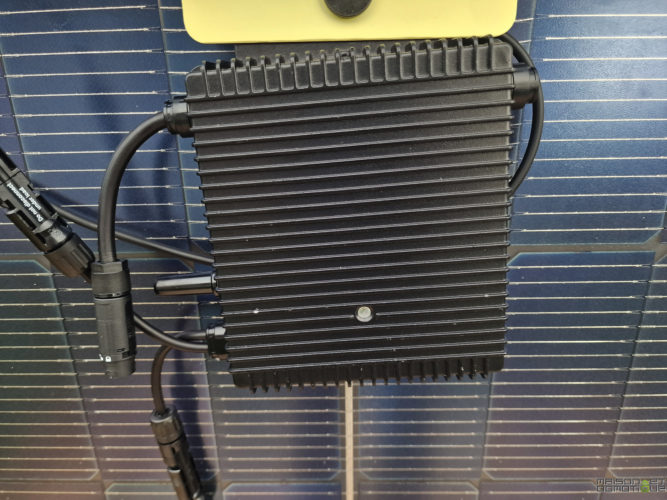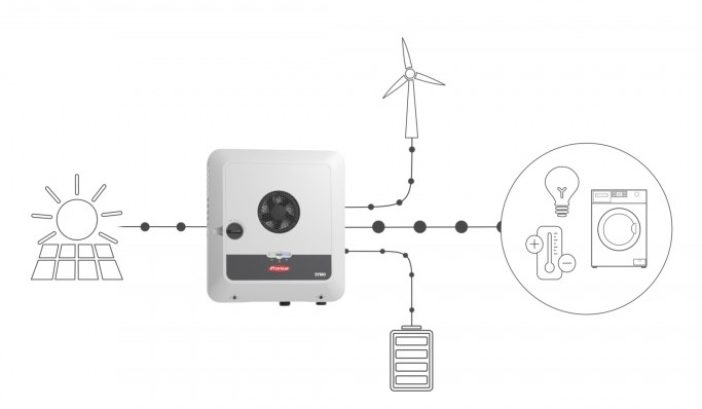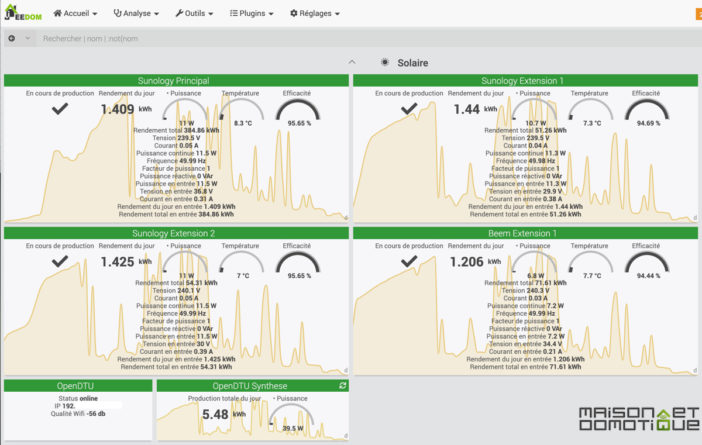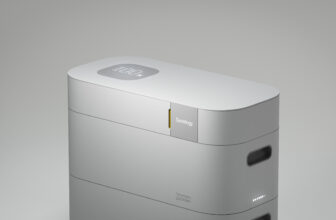While we often talk about solar panels and their capacities, cell types, bifacial, etc., we don't often hear about the photovoltaic inverter. Yet, this is the heart of the photovoltaic installation, as it plays an essential role in the proper functioning of the solar panels. It is equally important to select it carefully. Let's take a look at the photovoltaic inverter and its functions.
The role of the photovoltaic inverter in a solar installation
A photovoltaic inverter is an electronic device that converts the direct current (DC) generated by solar panels into alternating current (AC), which can be used by household electrical appliances or fed into the electrical grid.
This device has several functions.
Energy Conversion
The main role of the inverter is to convert energy. Solar panels produce electricity in direct current, but most electrical appliances and distribution networks use alternating current. The inverter therefore transforms direct current into usable alternating current, with maximum efficiency to minimize energy losses. Energy Production Optimization
Modern inverters are equipped with Maximum Power Point Tracking (MPPT) systems. This technology maximizes energy production by constantly adjusting the electrical load on the solar panels to obtain the maximum possible power.
Monitoring and Management
Current inverters also offer advanced energy monitoring and management features. They can be connected to online platforms or mobile applications to track the performance of the solar installation in real time, detect anomalies, and optimize yield.
Different Models of Photovoltaic Inverters
There are different inverter models. A visit to a specialist store like Avel Heol, for example, will give you a quick overview.
Microinverters are installed directly on each solar panel, allowing power conversion at the individual panel level. This offers performance advantages because each panel operates independently, reducing the impact of shading or faults on a single panel. They quickly replaced central inverters in residential installations. Well-known microinverter manufacturers include Enphase Energy, with popular models like the Enphase IQ7.
This type of inverter is also found in all the plug-and-play solar stations we tested, which aim to reduce a home's overall electricity consumption by directly reinjecting solar power into the home via a simple electrical outlet. Hoymiles is particularly well-known in this field, as is ApSystems.
Example of a hybrid inverter equipping a solar station
Hybrid Inverters
Some models offer additional capabilities, such as battery storage management. These allow excess energy produced during the day to be stored for later use, such as overnight or in the event of a power outage. The PowerStream model from Ecoflow is an example of a hybrid inverter that offers energy storage management features, allowing it to charge a Delta 2 or Delta Max 2 battery, for example.

Fronius also offers a wide range of inverters, including the Fronius Symo Hybrid, a hybrid model capable of managing solar energy production, battery charging, and home energy consumption.
Finally, some offer a ban on sending surplus energy back to the grid. If you don't resell your surplus, this can be an interesting option, as we're not immune to the possibility that Enedis will one day charge for “unauthorized” injections using its infrastructure…

Modern inverters often incorporate connectivity features, allowing them to be connected to smartphones or home energy management systems. This provides real-time monitoring and simplified management of energy production and consumption. For example, the SMA Sunny Boy is a model that offers robust connectivity and a user-friendly app for monitoring the system's performance.
Hoymiles or ApSystems models also often feature as the much-discussed solar stations, with Wi-Fi connectivity, and sometimes even proprietary ones. If you want to integrate solar production monitoring into your home automation system, it's important to first check which models are compatible, as is the case here with Home Assistant, for example. We also saw how to communicate with a Hoymiles inverter using MQTT.
, then allowing the information to be used in the desired system.
OpenDTU allows you to retrieve a wealth of information about your solar production.
Choosing your photovoltaic inverter When choosing an inverter for your photovoltaic installation, it is essential to consider the inverter's maximum output power relative to the total capacity of the solar panels. This capacity is generally expressed in peak watts (Wp). Ideally, the inverter's maximum power should be slightly greater than the total capacity of the solar panels. For example, if you have solar panels with a total capacity of 5 kilowatts peak (5 kWp), it is recommended to choose an inverter with a nominal power rating slightly higher than 5 kW. This ensures that the inverter can efficiently handle all the power produced by the solar panels without overloading. Choosing an inverter that is oversized relative to the capacity of the solar panels offers several advantages. First, this maximizes the efficiency of converting solar energy into electricity, as the inverter operates within its optimal load range. Furthermore, it provides a safety margin against potential performance losses due to factors such as partial shading of the solar panels or temperature fluctuations. Finally, it allows you to anticipate possible future expansions of the solar system without having to replace the inverter.On the other hand, choosing an inverter that is undersized relative to the solar panel capacity can lead to underutilization of solar energy production and reduce the overall efficiency of the system. It is therefore crucial to refer to the manufacturers' technical specifications to select an inverter that perfectly matches the power of your photovoltaic system.







Please remain courteous: a hello and a thank you cost nothing! We're here to exchange ideas in a constructive way. Trolls will be deleted.